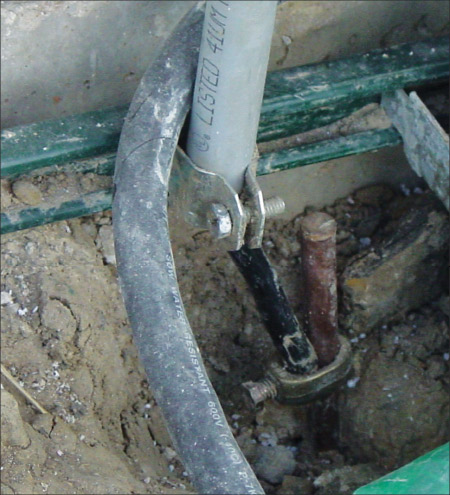
As you no doubt noticed, the definition covers a lot of ground (excuse the pun), as it includes all of the electrical code requirements, including that grounding must:
- be permanent and continuous;
- carry available fault currents without failure;
- have sufficiently low impedance to ensure
- that voltage rise during a ground fault will
- not cause damage to components such as sensitive electronic devices; and
- ensure that fuses and circuit-breakers react
- quickly enough to prevent electrical failures,
- fires and shock hazards.
In some cases, the Canadian Electrical Code does not require that all electrical circuits be solidly grounded. In others, the CEC prohibits it. Rule 10-108 specifies that circuits supplying electrical arc furnaces (such as a scrap metal melting furnace) need not be grounded. Rule 10-110 specifies that circuits supplying cranes operating above highly flammable fibres in Class III hazardous locations must not be grounded. This provision reduces the probability of arcs and sparks along the crane rails and the current collector, thereby limiting the risk of a flash fire. Rule 10-112 permits ungrounded circuits supplied by a transformer incorporating a grounded faraday shield between the primary and secondary windings when permitted by other rules or in special cases to prevent electrical accidents (underwater swimming pool speakers, for example).
We are all at ease with solidly grounded electrical systems. They provide the benefit of limiting system voltages to ground and minimizing voltage stress on wiring and electrical equipment insulation. Solidly grounded systems may experience high ground fault currents, but when correctly arranged, faults are quickly detected and removed by fuses or circuit-breakers before there is damage. In an industrial environment, shutting down during a ground fault may be impracticable, and therefore other grounding methods are recognized in the Canadian Electrical Code. Rule 10-106(1) requires that except where otherwise specified, 120/240-volt and 120/208-volt AC systems or circuits that include a neutral conductor must be grounded.
Ungrounded delta systems don’t require shutting down during a single-phase ground fault since they have no reference to earth. However, they come with risk of equipment damage as well as personal safety risks when a second phase becomes inadvertently grounded. In addition, overvoltages tend to shorten the lives of electrical equipment. Rule10-106(2) requires that ungrounded delta systems must be equipped with ground fault detection devices such as ground indicating lights to ensure that inadvertent grounds are removed as quickly as possible. But you know what happens to those — the indicating lights burn out and are not promptly replaced, leaving people and equipment at risk.
A nice compromise is resistance grounding which permits operation during a single-phase ground fault. Resistance grounding offers a number of important advantages. It limits ground fault currents by connecting a grounding resistor between the electrical system neutral and the system ground electrode and thereby:
- minimizing damage to electrical wiring and equipment;
- reducing mechanical stresses;
- reducing arc flash and arc blast hazards ;
- controlling overvoltages; and
- no shutdown required during a ground fault.
Finally, effective grounding helps ensure that faults are quickly removed. Rule 10-500 defines effective grounding. Sound familiar? But what’s this about “impedance sufficiently low”? Appendix B provides an answer: impedance of the ground fault path should be sufficiently low so as to permit at least five times the setting of the circuit overcurrent devices to flow during a ground fault. For example, for a 400-ampere circuit, at least 5 times 400 amperes or 2000 amperes must be allowed to flow during a ground fault.
As with earlier articles, you should always check with the electrical inspection authority in each Province or Territory as applicable for a more concise interpretation of any of the above.













Find Us on Socials